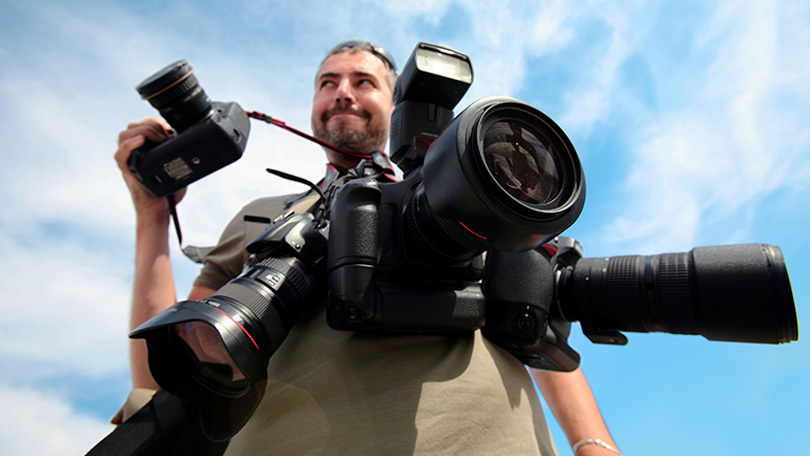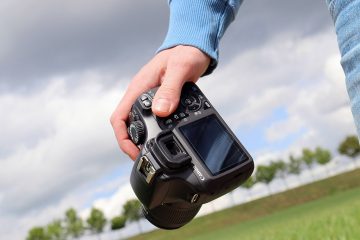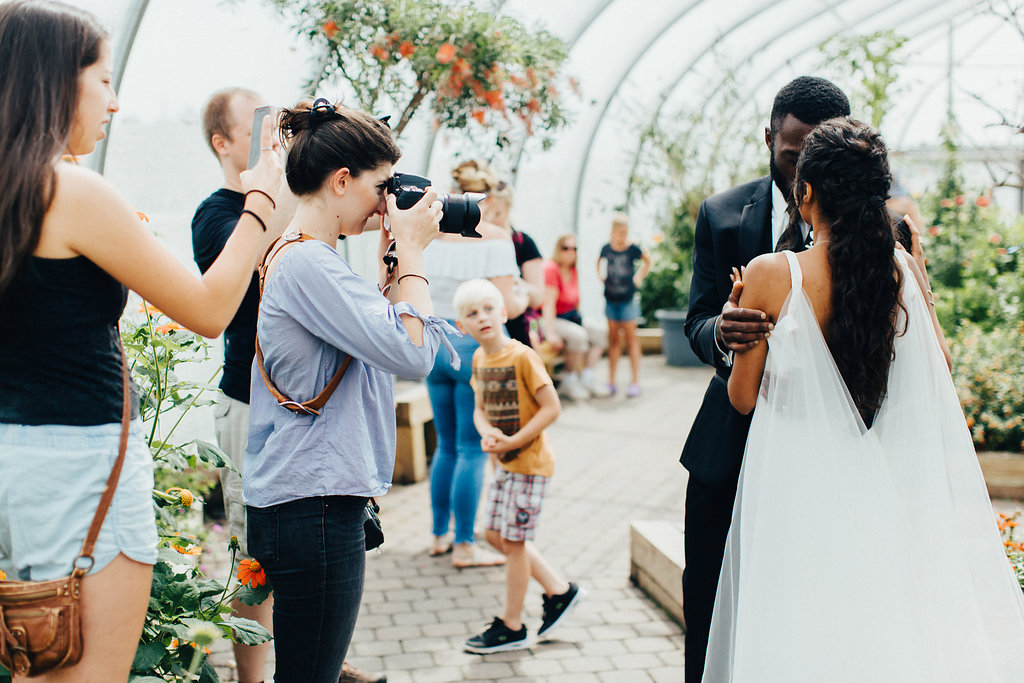
These are our top tips for improving your photography skills, no matter if you’re a beginner or an experienced photographer.

1. Apply the Rule of Threes
This rule allows you to take striking pictures by following one of the most powerful rules of composition. The Rule of Thirds is a composition secret that will help you create pictures with a WOW factor. The rule of thirds is as simple as thinking about four lines. Two horizontally across the image, and two vertically creating nine even squares. While some images look best with the central point in the middle square, others will look better if the subject is placed off-center at one the intersecting points of the imaginary line. The eyes will wander if a photograph is made using the rule of threes. The rule of thirds makes a picture more pleasing to the eyes. The Photography for Beginners Course by Photographer Expert will teach you how to create stunning photos you can be proud of.
2. Avoid Camera Shake
Here are some tips to avoid blurry or camera shake. You must first learn how to hold the camera properly. Use both your hands to wrap the body around the lens, and your other hand to support the body. For handheld photography, ensure that your shutter speed is set to the appropriate focal length for your lens. Your entire photograph will become blurry if your shutter speed is too slow.
To minimize this problem, it is best to not shoot at a shutter speed slower than your focal length. If possible, use a monopod or tripod. Do you get confused by the terminology? Are you looking to learn how to control your camera? Our most popular course is Photography for Beginners by Photography Expert. This course is the easiest way to learn the basics of your camera and take great photos.
3. Use the Exposure Triangle
You need to be familiar with the basics of ISO, Shutter Speed, and Aperture in order to get your photos looking great. Understanding the relationships between these three controls is also important. To achieve the desired results, you will usually need to adjust at least one of these controls. Auto Mode can take care of these controls but it often results in photos that are not as you expected. It is a better idea learn Shutter-priority and Aperture priority modes, then move on to Manual mode. Photography for Beginners is a great course by Photography Expert that will help you learn the basics.
4. Use a Polarizing Filter
A polarizer is the best choice if you only have one filter to buy for your lens. Circular polarizers are the best because they allow you to use TTL (through-the lens) metering, such as auto exposure. This filter reduces reflections from water, metal and glass. It also improves colors in the sky and leaves and gives your photos that WOW factor. This filter will protect your lens while doing all of that. It can be used for all your photography needs. Hoya Polarizer filters are the best choice for their performance and affordability.
5. Give your mind a sense of depth
It is important to capture a feeling of depth when photographing landscapes. For a panoramic view, use a wide-angle lens and a small aperture (f/16 or less) to keep the background and foreground sharp. A tripod is a good idea as it helps to emphasize the distance and scale of the object or person.
6. Simple Backgrounds
Digital photography is best when it is simple. You have to decide what you want in your shot and not include anything distracting. You should choose a simple background, such as neutral colors or simple patterns, if you can. The focus of the image should be the focal point, not a background with a lot of color or odd buildings. This is particularly important if the model is not in the center of the shot.
7. Don’t Use Flash Indoors
Flash can make indoor portraits look unnatural and harsh, especially if it is used in harsh lighting conditions. There are many ways to take indoor portraits without flash. The first thing you should do is increase your ISO – typically ISO 800 to 1600. This will affect the shutter speed that you can choose. You will get a blurred background if you use the largest aperture. This will allow more light to reach the sensor. Use an I.S. (Image Stabilization) tripod. A tripod or an I.S. (Image Stabilization lens) is a great way of avoiding blurring. Flash is not an option unless you are absolutely forced to use it. Use a flash that can rotate and point at the ceiling from an angle. This video will show you how to get the best light possible for landscapes and portraits.
8. Select the right ISO
The ISO setting controls how sensitive your camera to light and how finely grainy your image is. The ISO setting we choose will depend on the situation. If it is dark, we should increase the ISO to 400-30000 to make the camera more sensitive and avoid blurring. As there is more light, we can use the Auto setting or ISO 100 on sunny days.
9. Pans to Create Motion
The panning technique is used to capture subject motion. For 1/250 shutter speed, use 1/60. To lock the focus, keep your finger half-way down on the shutter and your camera in front of the subject. Once the shutter is closed, take the shot, following them as they move. To avoid camera shake and to get clear movement lines, use a monopod or tripod.
10. Experiment With Shutter Speed
To create interesting effects, don’t be afraid of playing with the shutter speed. Try shooting nighttime shots with a tripod using a shutter speed of 4 seconds. The object’s movement is captured with light trails. You can freeze the action by using a slower shutter speed, such as 1/250th of an second. The trails won’t be as long and bright if you use a faster shutter speed. You can also try shooting compositions with moving objects, such as people walking or waves, or cars commuting. Try different shutter speeds to capture blurred motion or snaps that freeze the action in sharp time. To eliminate camera shake when using slow shutter speeds to blur movements, make sure the camera is stable. The Amazon Basics 60 inch Portable Tripod is an excellent option for photographing slow shutter speeds.
Top 10 Gifts For Photographers Under Edition
28 January 20223 Tips On How To Use A Circular Polarizer
28 January 2022Do You Actually Need A Polarizing Filter
28 January 2022
Average Rating
Leave a Reply Cancel reply
-
Meet Our Photographers
30 June 2021 -
Best Photography Studio Cameras
5 July 2021





